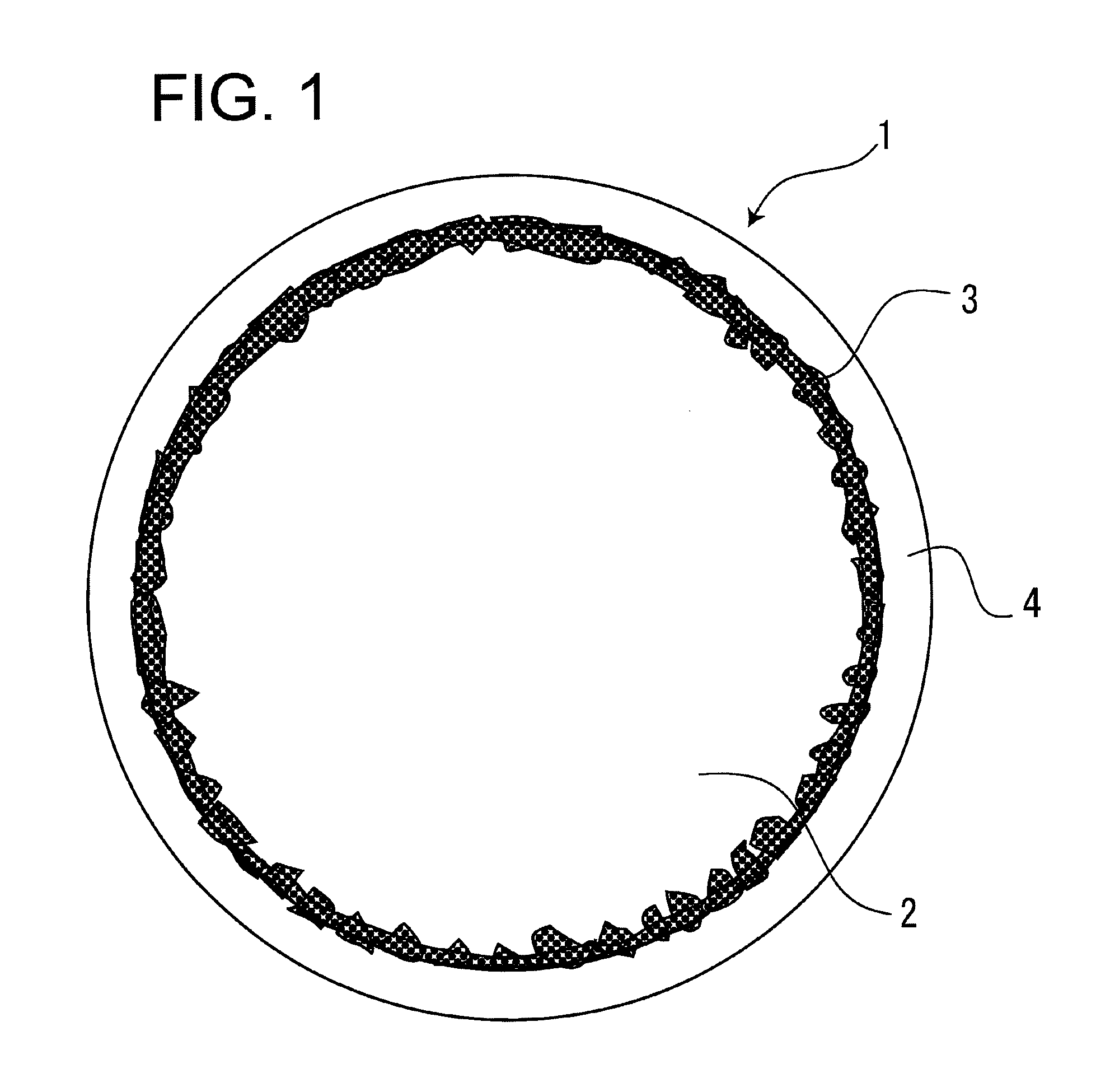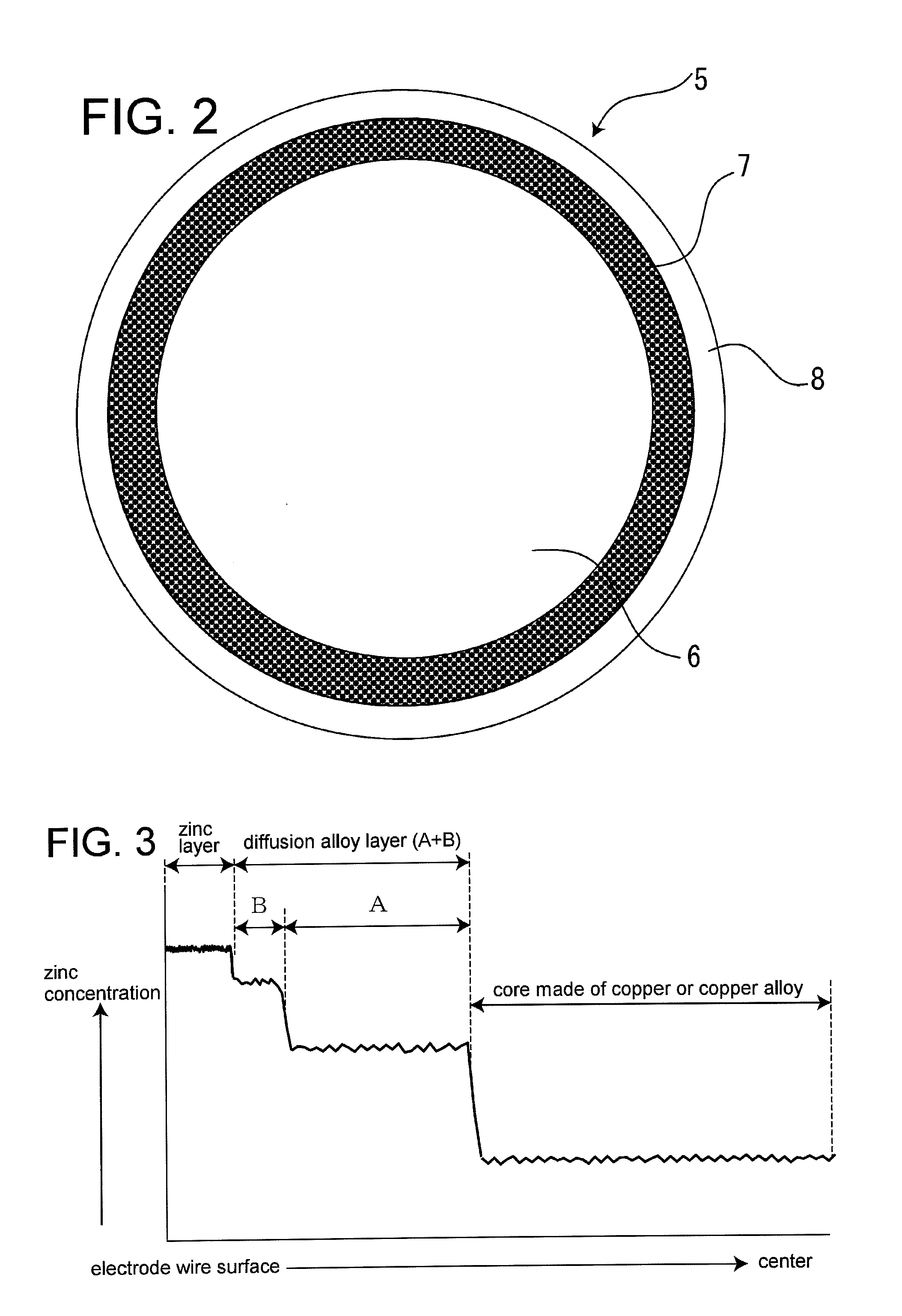Electrode wire for wire electrical discharge machining, method for manufacturing the same, and method for electrical discharge machining using the same
- Summary
- Abstract
- Description
- Claims
- Application Information
AI Technical Summary
Benefits of technology
Problems solved by technology
Method used
Image
Examples
embodiment
[0083]Embodiment of the present invention will be described below.
[0084]FIG. 7 schematically shows a facility that performs the method for manufacturing the electrode wire 1 for wire electrical discharge machining according to the present invention. A wire-drawing apparatus 13 for the galvanized base wire 5 shown in FIG. 2 and annealer 14 can be arranged before a take-up apparatus 15 as shown in FIG. 7 or outside the facility so as to draw a already taken-up wire.
[0085]Controlling the temperature of hot-dip galvanizing and dipping time can determine the thickness of the copper-zinc alloy layer 7, which is a diffusion alloy layer, and the zinc layer 8. The tendencies of thickness variations will be shown below.
1. Diffusion Alloy Layer (Copper-Zinc Alloy Layer)
[0086]a. The diffusion alloy layer becomes thinner when the dipping time is shorter as long as the temperature is the same.
[0087]b. The diffusion alloy layer becomes thinner when the temperature is lower as long as the dipping t...
PUM
| Property | Measurement | Unit |
|---|---|---|
| Temperature | aaaaa | aaaaa |
| Temperature | aaaaa | aaaaa |
| Fraction | aaaaa | aaaaa |
Abstract
Description
Claims
Application Information
 Login to View More
Login to View More - R&D
- Intellectual Property
- Life Sciences
- Materials
- Tech Scout
- Unparalleled Data Quality
- Higher Quality Content
- 60% Fewer Hallucinations
Browse by: Latest US Patents, China's latest patents, Technical Efficacy Thesaurus, Application Domain, Technology Topic, Popular Technical Reports.
© 2025 PatSnap. All rights reserved.Legal|Privacy policy|Modern Slavery Act Transparency Statement|Sitemap|About US| Contact US: help@patsnap.com



